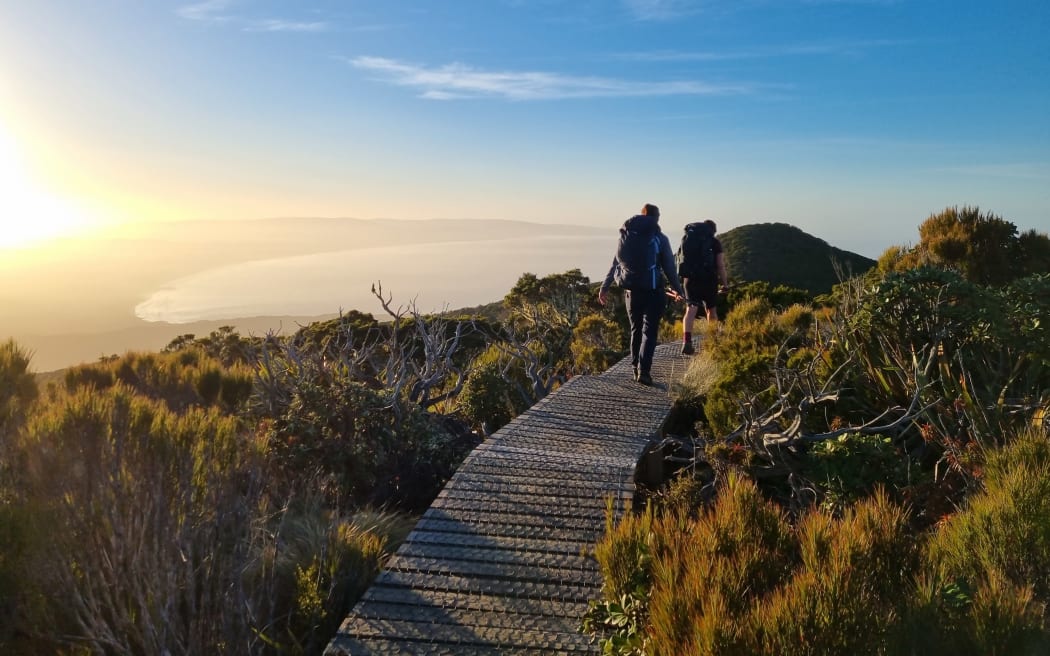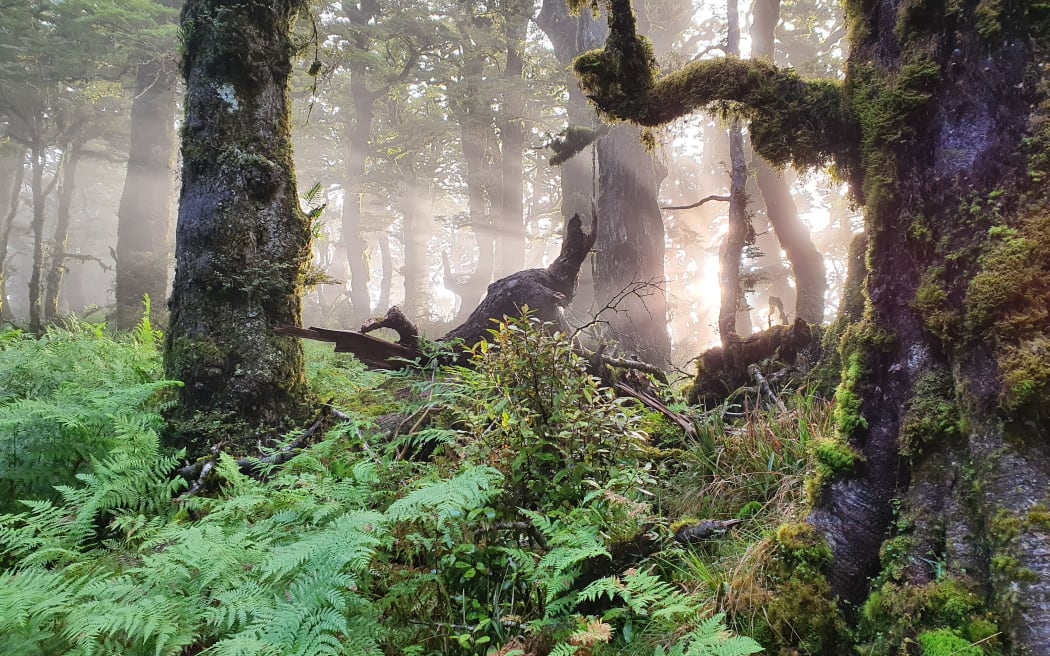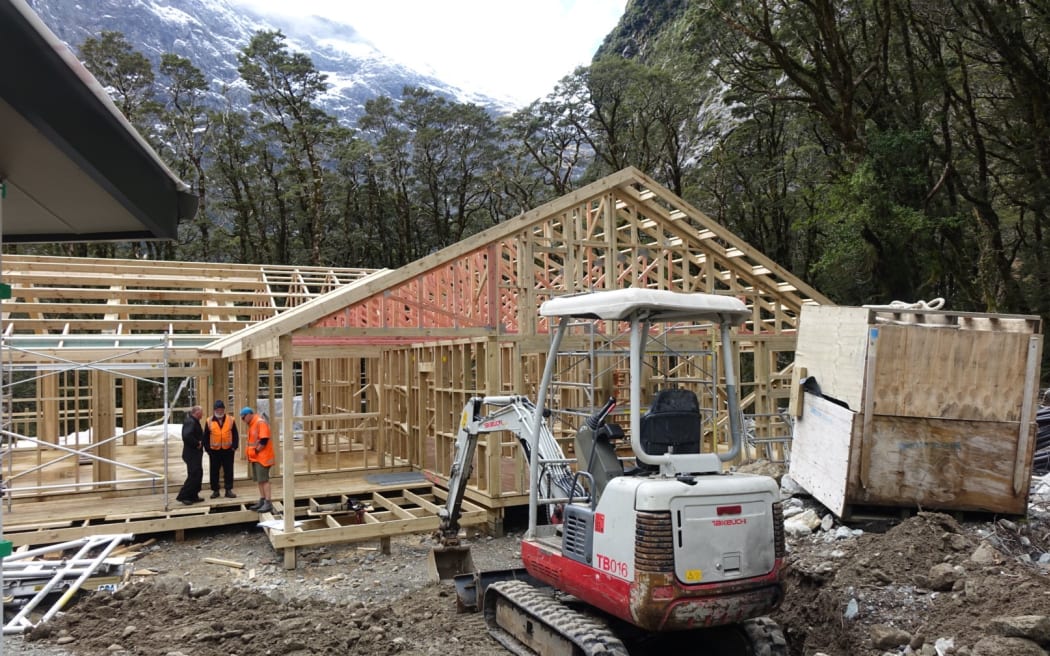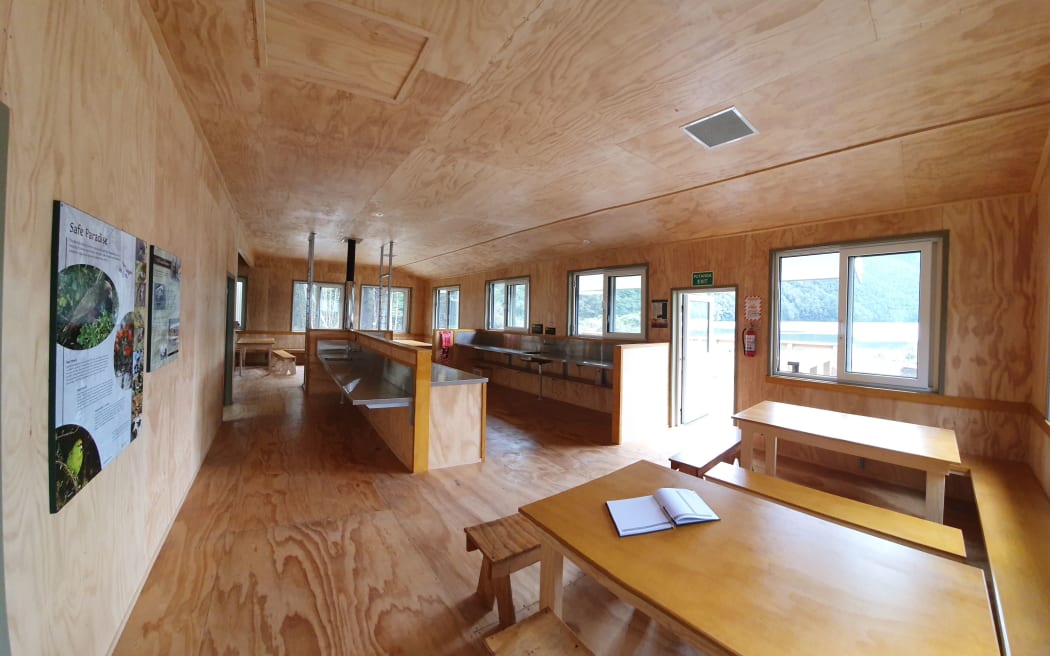
The Hump Ridge Track near Tuatapere, in Fiordland, is one of the Great Walks. Photo: RNZ / Tess Brunton
Correction: This story has been updated to clarify the 21 percent decrease in DOC's overall funding is over the period until 2026/27, not this year.
Environment and recreation groups are warning the proposed cuts to Department of Conservation staff could cause long-term consequences and losses of flora and fauna as well as backcountry huts.
The Department of Conservation (DOC) is proposing to cut 130 roles to meet the government's mandated 6.5 percent reduction in spending.
"We have tried to find options that would have the least impact overall on people and on conservation outcomes," DOC said in a statement.
It will not know the exact number of job losses until it has consulted with staff.
Forest and Bird said DOC's budget was about the same as Christchurch City Council's, but it was expected to look after nearly a third of New Zealand's total land area.
The 6.5 percent reduction in spending overall comes on top of a 21 percent fall in funding due to the end of the Jobs for Nature and other time-limited funded programmes.
DOC’s funding overall was due to drop from $880m this year 2023/2024 to $728m in 2026/27.
Federated Mountain Clubs (FMC) president Megan Dimozantos told Checkpoint they were concerned about the effect job cuts would have on the mahi on the frontlines.
"DOC already has the impossible task of managing a third of the landmass of New Zealand on less than half a percent of the government budget.
"We're incredibly concerned about the budget cuts, that there's not a lot of fat there for the department as it is, and that we're really concerned about the the conservation outcomes that we're going to see under these cuts and the loss of skills and experience in the department that may occur."
The department's plight to protect the conservation estate was highlighted in a DOC briefing to Conservation Minister Tama Potaka late last year: "Despite all we are doing to try to protect and restore habitats and assist species, nearly 4000 native species are either at risk or threatened with extinction. When species are lost from New Zealand, they are often lost from the whole world, and many are only holding on in small numbers because of intensive management".

The Lake Waikaremoana Great Walk is surrounded by native bush. Photo: RNZ/Sally Round
Likewise, Dimozantos was worried for the future of New Zealand's flora and fauna.
"I mean, there's 4000 species that we're at risk of losing, isn't there? So, you know, I think that that's probably going to be the primary concern is that we'll lose things that we can't get back.
"And I suppose from FMC's perspective as well, you know, that also applies to the to the places that people are recreating. We don't want to lose our backcountry huts network either.
"The smaller, more basic huts that sit sort of a bit further out of the reach of the crowds ... those are probably the ones that we're most concerned about. They are looked after largely by volunteers at the moment, but obviously they could well be in the firing line with budget cuts."
Potaka told reporters the government had been consistent in its messaging about preserving the frontline workers for essential services.
"I have worked with the CEO and had discussions about the processes being undertaken but they're following their own internal guidelines, but as I say we're in the proposal stage and all things will be confirmed in due course.
"[I have] had couple of conversations with the director-general to make sure that it's done in a respectful and mana-enhancing and judicious manner and I think she's been very deliberate and the agency has been very focused."
Cut costs with more modest huts - FMC
Dimozantos acknowledged the work of volunteers, who she said the department already relied heavily on to pick up gaps in conservation efforts.
"Those people are really engaged with DOC and we work alongside DOC as partners. But obviously there's going to be a lot more pressure on even those resources now."
A shift to more basic facilities on public conservation land could help ease cost pressures, she believed.
"I think probably a lot of our Great Walks are looking a bit posh these days, and certainly if you look at the likes of Mintaro Hut, I think that costs over $4 million to build, whereas if you were to build a basic backcountry hut, a little six-bunker on the backcountry, you're probably looking at about 150 grand.
"There's certainly places that that we could be a little more modest in the backcountry and still we're providing an awesome experience for people who want to go there."

The Mintaro Hut on the Milford Track, pictured under construction in 2020. Photo: RNZ
Many of DOC's 967 backcountry huts were ageing and in poor repair, while the length of track being maintained has grown from 11,000km to 15,000km over the last 14 years.
The 2023 briefing to the minister also stated the current visitor network was "not sustainable" and taking staff and cash from biodiversity efforts.
But Dimozantos did not believe raising fees for visitors would be wise; the more people paid, the more they expected from the public facilities, which would again mean higher costs on the department.
Losing a tourism drawcard?
A leading environmentalist said the job cuts at DOC risk damaging New Zealand's most valuable asset - nature.
Environmental Defence Society chairperson Gary Taylor said the proposal was the latest move in the government's war on nature.
"Not only are they introducing regressive laws to de-prioritise environmental criteria when making decisions about projects, they are now cutting funding for our core agency that manages one-third of our country."
New Zealand's conservation estate was the main drawcard in one of its biggest exports - tourism - while agriculture also relied on the country's clean green image, Taylor said.

The Kōhanga Atawhai - Manson Nicholls Hut was rebuilt at Lake Daniell in the Maruia Valley. Photo: |Supplied / DOC
Forest and Bird also warned of "long-term consequences for nature and the economy" from the proposed job losses.
Advocacy manager Richard Capie noted this came on top of cuts at other government agencies involved in protecting New Zealand's natural environment, including the Ministry for the Environment, Biosecurity New Zealand and the National Institute of Water and Atmospheric Resarch.
"The same day that the government released a report saying that New Zealand communities and economy are at risk if we do not protect our natural ecosystems and landscapes, it announced it was cutting jobs and the budget of the agency that leads Government conservation work," Capie said.
"New Zealand cannot afford to lose highly skilled and dedicated Kiwis who are charged with protecting our threatened species and their habitats.
"Not only do we have a government axing environmental protections through its fast-track reforms we now have the prospect of these cuts during a climate and biodiversity crisis. It makes no sense - not environmentally nor economically."
According to the Sustainable Business Council, 70 percent of New Zealand's exports depended on natural resources.
"We know that investing in nature-based solutions, increasing wetland protection, and controlling browsing mammals reduces the impacts of climate events and improves our ability to reduce emissions. A strong environment is the backbone of a strong economy," Capie said.

